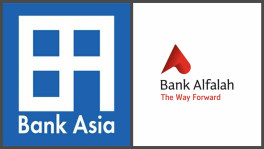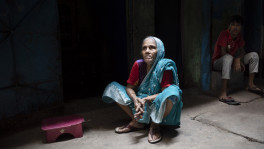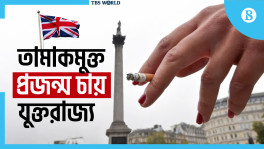Who are the middle class in Bangladesh?
There is no universally accepted definition of this group as economists give varying standards

Shafiqul Islam, a driver by profession, has recently lost his job in the Covid-19 pandemic. He has five brothers who are either employed in a similar profession or have already lost their jobs.
Although Shafiqul and his brothers have consistently earned poorer incomes than the presumed standard earnings of the middle class, they believe they belong to the middle class.
"This coronavirus has crippled my earnings. No one understands the pain of a middle class man in this country. Neither can I ask for help from others nor do I have the means to save my family from hunger," Shafiqul said.
His cousin Abdul Kadir, on the other hand, has recently returned after working in Saudi Arabia for around a decade. He established his own business in Rajbari town.
Kadir was reputed for his consistent six-digit earnings while employed in Saudi Arabia, which is a rare case. For example, his elder brother Abdul Latif earned way less than half of what Kadir earned.
However, Both Kadir and Latif also believe that they belong to the middle class.

"I was a migrant in Saudi Arabia. After retiring and returning to Bangladesh, I established my business with a big dream. But after I was infected with coronavirus and faced a dull business season, I fear for my future now. What would a middle class man like me do if my business is gone? Will I pull a rickshaw to make a living?" Kadir said.
It is not only Shafiqul or Kadir brothers, but many people in Bangladesh – from drivers to small businessmen to university professors – are self-proclaimed middle class irrespective of their earnings and professional differences. In most cases, the standard of middle class in Bangladesh is self-proclaimed as there clearly lie misperceptions in terms of defining this income group.
This confusion about the definition of the middle class, however, is not only limited among the common people. Economists and social scientists also struggle to find a common ground when it comes to defining this class.
Addressing this, Professor Dr Mainul Islam, chairman of Population Science Department at the University of Dhaka, told The Business Standard, "I have studied population demographic and sociology. The way I will define the middle class will be completely different from the definition of an economist's perspective. There is a lack of clear definition of the middle class."
He classifies the middle class in Bangladesh into two categories from two different perspectives – economic and sociological.
"If we see things from economic perspective, the Asian Development Bank (ADB) categorises the people who earn between $2 and $20 per day as the middle class. So, if this is what we consider the standard, then around 37 to 40 million people of Bangladesh – around 22% of the total population – fall into the middle class."
The professor defines this group as the "economic middle class" because this standard is defined based on income dimension. But from a sociological perspective, he thinks a notion of belonging to the middle class grows among people based on how one develops a self-image of being in that group.
"According to social science, education is a very important variable to judge one's social mobility. We may look at how education has transformed someone and whether better education has brought any change to their income opportunity and occupation structure," Dr Mainul added.

This struggle to define the middle class, however, is not a national limitation. The struggle, indeed, is international.
Distinguished economist Mushfiq Mobarok is a professor of economics at Yale University. He told The Business Standard there is no universally accepted definition of the middle class.
"People earning under $2 per day are considered poor. So, some leading researchers, including Nobel laureates Abhijit Banerjee and Esther Duflo, have used definitions like earning $2-$6 per day to be categorised as the lower middle class or $6-$10 per day as the upper middle class.
"These thresholds are still quite poor by global standards. Even the lower thresholds account for people between 20th percentile and 80th percentile of income in developing countries."
Distinguished Australian economist Martin Ravallion in his World Bank policy research working paper titled "The Developing World's Bulging (but Vulnerable) 'Middle Class'" also admitted that there is a little sign of agreement on what the middle class means.
He mentions Birdsall's definition in the paper that the middle class are those with incomes between 75% and 125% of the median (a median is a value separating the higher half from the lower half of a data sample, a population or a probability distribution) in each country.
However, he also mentions that "in contrast to this relative definition (with real-income bounds specific to each country), other authors have defined the middle class in purely absolute terms (with common bounds across countries)."
Amid this global contradiction in defining the middle class, The Business Standard asked Dr Binayak Sen, the research director of the Bangladesh Institute of Development Studies (BIDS), the definition of the middle class in Bangladesh and its size.
He said considering $2 to $4 per-day earning as the standard income of middle class people in this region, through a complex calculation of purchasing power parity (PPP), the standard monthly income of a four-member middle class family stands between Tk70,000 and Tk150,000.
He believes that around 30% of Bangladesh's population belong to this category.

The BIDS research director said the standard of middle class could be determined depending on the size of the family. "For example, if you are a two-member family and the monthly income is more than Tk70,000, then you are quite well-off than the average middle class."
However, as the pandemic has wreaked havoc on the economy, economists have repeatedly warned the colossal impact of economic downturn on this perceived middle class and the "vulnerable non-poor".
So, against this backdrop of confusion surrounding the definition of the middle class, who are the "vulnerable non-poor"?
Dr Binayak said the "vulnerable non-poor" families in Bangladesh have a monthly income between Tk35,000 and Tk70,000. In an earlier interview with Deutsche Welle (DW), he said around 25-30% of the country's population belong to this category.
However, many middle class and vulnerable non-poor families, defined as per the above criteria, in Bangladesh have been affected by the unprecedented coronavirus crisis.
Yale Professor Mushfiq said, "We know from the survey data we have collected that families that relied on remittance to enter the middle class were very intensely affected by this crisis. There was also a great loss of business income."
He said in their combined survey data from 10 low- and middle-income countries – ranging from Sierra Leone at the lower end, Bangladesh, Ghana, and Nepal in the middle, and Colombia and the Philippines at the higher end – they have observed that even in middle-income countries, the nature and size of the shock the pandemic had on employment and income was just as large as in poor countries.
Mushfiq emphasises increasing vigilance to save this economic class.
"There are many social safety net programmes designed for people who are chronically poor, as there should be, because these are the people who are the most vulnerable. However, we have to be vigilant about the risk of the middle class, which has also lost a lot, falling through the cracks because they are not covered under the existing programmes," the professor added.


 Keep updated, follow The Business Standard's Google news channel
Keep updated, follow The Business Standard's Google news channel
















